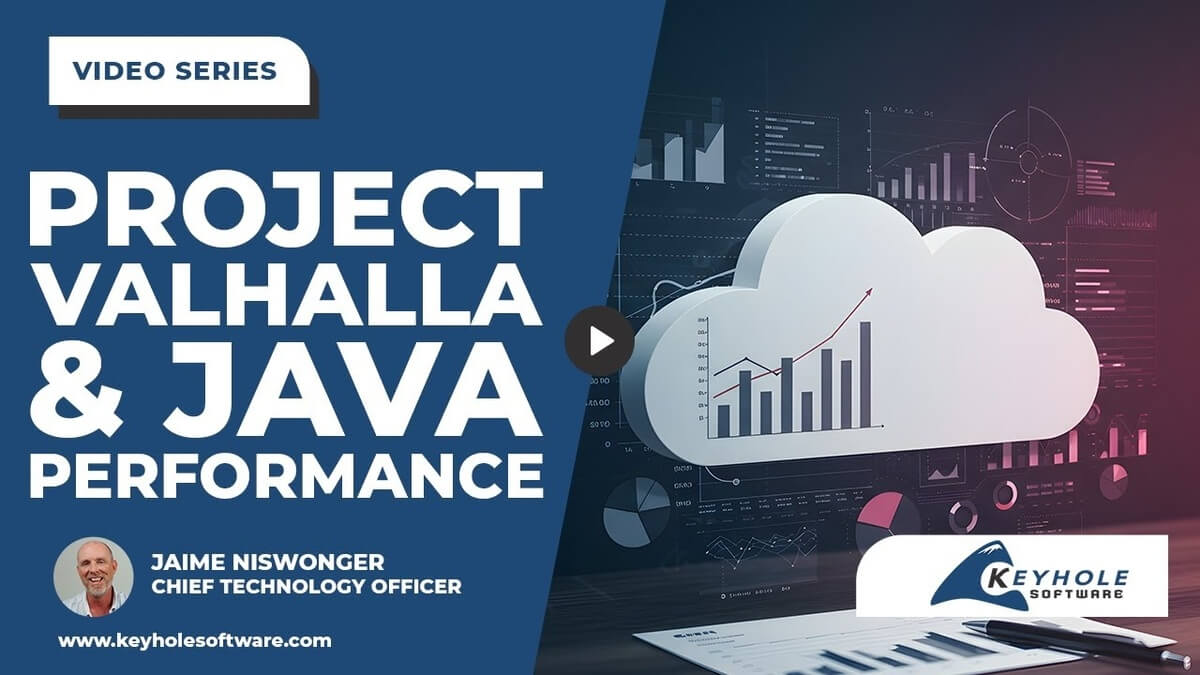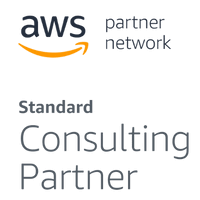Today, Zach interviews LinkedIn Top Voice and Digital Transformation Strategist, Jeff Winter. From the beginning, Jeff’s career has centered around manufacturing, with his latest focus being on Industry 4.0. You may have heard the buzzwords, but do you know what Industry 4.0 and Digital Transformation really are?
Zach and Jeff dive head first into these concepts, explaining their unique meanings and implications on the business world. The fourth industrial revolution is here. Let’s embrace it together.
Key Takeaways include…
- Transformative Impact Across Industries: Generative AI is revolutionizing industries by enhancing efficiency and reducing costs. Its applications span across sectors, impacting every role from frontline workers to CEOs.
- Augment, Don’t Replace: Use Generative AI to complement and enhance existing skills rather than replace them. This approach boosts productivity and effectiveness, allowing professionals to save time and improve the quality of their work.
- Ubiquitous and Rapid Adoption: The rapid adoption of Generative AI, exemplified by tools like ChatGPT, marks a significant shift. Its integration into everyday tasks and business processes is becoming ubiquitous, demonstrating its profound potential and versatility.
View This Episode On:
- YouTube: https://youtu.be/MxYmcNGXcfY
- Apple Podcasts: https://podcasts.apple.com/us/podcast/generative-ai-in-the-enterprise/id1730289289?i=1000659420736
- Spotify: https://open.spotify.com/episode/0IcAP7sDXd0gcgPEUkASJK?si=6e85da9ddc6147f4
- … or wherever you get your podcasts!
About The Generative AI In The Enterprise Series:
Welcome to Keyhole Software’s first-ever Podcast Series, Generative AI in the Enterprise. Chief Architect, Zach Gardner, talks with industry leaders, founders, tech evangelists, and GenAI specialists to find out how they utilize Generative AI in their businesses.
And we’re not talking about the surface-level stuff! We dive into how these bleeding-edge revolutionists use GenAI to increase revenue and decrease operational costs. You’ll learn how they have woven GenAI into the very fabric of their business to push themselves to new limits, beating out competition and exceeding expectations.
See All EpisodesPartial Generative AI In The Enterprise Episode Transcript
Note: this transcript section was created using generative AI tools like YouTube automated transcripts and ChatGPT. There may be typos, slight content changes, or character limits for brevity!
Zach Gardner: Jeff Winter, the Senior Director of Industry Strategy and Manufacturing at Hitachi Solutions. Jeff, what’s going on? How’s it going?
Jeff Winter: I’m excited to be here. This will be a fun new type of conversation to have.
Zach Gardner: Very good. And of course, the disclaimer—it’s going to go on my tombstone because I’ve said it so many times—the views and opinions expressed in this program are the views and opinions of the participants and do not reflect their employers, their trade organizations, or any hotel chains they have royalty points with. It’s just two dudes; we’re just talking, having a good time. If my video gets a little dark, it’s because the eclipse is going on.
Now Jeff, for those who haven’t had the pleasure of meeting you, could you talk me through your career, your background? How did you get into digital transformation?
Jeff Winter: Sure. So, currently, I lead the Industry Strategy for Manufacturing with Hitachi Solutions. What that basically means is it’s my job to help point my company in the right direction to be a world-class digital transformation solution provider. To be good at that, I have to be intimately involved with what’s happening in the industry, which is why I participate in so many industry associations, academic groups, research teams, advisory bodies, standards bodies—everything, so that I can be more equipped and credible to provide that guidance.
My journey’s been pretty interesting. Over my career, I’ve been in the manufacturing industry the entire time, and I’ve worked with several different companies in several different roles. I started in sales, then I went into marketing, then operations, then strategy, then back into sales, and now I’m back into strategy again. My journey and my focus have changed over time. I did more industrial automation in the first part of my career, then I focused on safety. That’s where I learned about thought leadership. I was assigned Industry 4.0 as part of my role back in December of 2018. I’d never heard of it at that point—no idea what it was. Was it a company? A firmware update? I had no idea. So, it was my job to figure out what it was and what it meant to my company at the time. I used all the skills I learned in becoming a thought leader and being involved in the industry from industrial safety and applied that to Industry 4.0. I really took off with the subject, ended up really liking it, and getting involved. Now, yes, I’m known as the guy who posts on LinkedIn all the stats and trends and industry benchmarks and insights—most of which people don’t know. A lot of those things I’m posting are things that I recently learned myself as well. So, I’m sharing my journey publicly for people to see as I go through it.
Zach Gardner: I come from a non-manufacturing background, so I will be honest about that. I’m not even a dilettante, just a neophyte, if you will. Could you talk to me about what Industry 4.0 is? How is it different than Industry 3.0? Did we skip Industry 2.0? Where did this term come from? What does it actually mean?
Jeff Winter: Sure. There are two concepts I like to explain because a lot of people use them interchangeably or get them confused: digital transformation and Industry 4.0. I’ll start with digital transformation. Digital transformation, in my view, is like taking your old beloved record player and turning it into a smart, voice-activated music system that can play any song you think of, from classic vinyl records to the latest streaming hits. It’s about upgrading and integrating digital technology into every aspect of your life or your business, making processes more efficient and completely changing and enhancing the user experience for not just you, but everyone involved. It’s not just about slapping on some new tech and calling it a day—it’s a serious journey, a strategy to fundamentally change how you operate and deliver value. Think of it like renovating a house. You don’t just repaint the walls and move the furniture around. When you transform your house, you are entirely changing the layout, knocking down walls, adding additions, replacing appliances, and fundamentally changing the way you live in your home. In a digital world, this home will also become a smart home by adding smart devices and infrastructure to move into a new digital lifestyle.
In the business world, digital transformation is similar. It’s about using digital tools and technologies to completely change the way you think about your business, how you provide value, make decisions, manage, operate, collaborate, and even engage with the world.
Now, Industry 4.0, a concept I love to talk about, describes the fourth industrial revolution, which is the era we are living in now. This revolution is characterized by a fusion of technologies blurring the lines between the physical, digital, and even biological worlds. It’s a profound shift in how we produce, consume, and relate to technology. It’s a monumental shift because manufacturing is such a colossal component of our society. It shapes the way we work, buy, and live. The term 4.0 has become so famous that you’re even seeing it being applied to other industries it wasn’t originally intended for: government 4.0, education 4.0, finance 4.0 are all examples. Government 4.0, for instance, encapsulates the move towards digital governance and using technology to improve transparency and citizen engagement and the delivery of government services. Education 4.0 speaks to the digital revolution in learning, where traditional classrooms are supplemented or complemented by virtual environments and personalization in how education is delivered, with AI being a big component of that. Finance 4.0 reflects the seismic shift in the financial sector with digital currencies, blockchain, and fintech innovations transforming how we manage and interact with money.
Digital transformation is the strategy to transform using digital tools and technology. Industry 4.0 describes the vision of what we can do when we transform and the era we are living in right now.
Zach Gardner: Very well put. I’m sold! I’m jacked. And I don’t know if you noticed, I have my Audio-Technica headphones on. Talking about being an audiophile, these things are very, very nice. You talked about upgrading, innovating, and delivering things at a pace that our customers need. In my industry, there have been a few seismic shifts: single-page applications, microservices, the cloud—not to be confused with the clouds above us, but like the Azures of the world, the AWSs—things that have disrupted society, business, and the way we think about the world. GPT, generative AI, is everywhere. I’m curious, what’s your take on how generative AI is impacting the manufacturing industry, digital transformation? What are people talking about? What are some opportunities that might not be getting enough attention?
Jeff Winter: Great question, and everyone’s talking about it. In the period spanning late 2022 to early 2023, the rise of consumer-facing generative AI tools marked a significant shift in how both the public and enterprises perceived AI’s potential. Discussions around generative AI’s capabilities started with the introduction of GPT-2 in 2019, but its full promise only became palpable to businesses recently. While AI has already been on organizations’ radars, generative AI has democratized its application, allowing it to permeate every business function. This generative wave, I believe, is pushing AI from isolated applications to being an enterprise’s central nervous system. Economic projections suggest that the AI revolution could infuse the global economy with $2.6 to $4.4 trillion annually, according to McKinsey Global Institute. They anticipate AI potentially bringing forward the automation of half of all work to a decade earlier than expected. Its influence on everything and everyone is undeniable. Simply put, ChatGPT single-handedly increased everyone’s interest in the whole field of AI.
To answer your question on what everyone is talking about, the answer is that everyone is talking about it in every possible capacity. This is one of the few technologies that impact every industry, function, and even every role, from the frontline worker to the CEO, and everyone is using it differently. According to Deloitte’s 2024 State of Generative AI, most people are excited primarily about generative AI’s potential to improve efficiency, number one, and reduce cost, number two. They also evaluated adoption levels across different functions and organizations. IT and cybersecurity had the highest levels, followed by marketing, sales, and customer service, with legal at the bottom. McKinsey ran a different study on AI in 2023 based on which functions are seeing the biggest gains in revenue and cost reductions from AI. Manufacturing was the function reporting the most companies seeing revenue gains and cost reductions, with 16% claiming over 20% or more revenue increase. This shocks most people, as they don’t realize that’s where most value is being gained.
Challenges include monitoring regulatory requirements and ensuring compliance, as it’s brand new and we’re all trying to figure out what the world will do with it. Companies are also worried about establishing a governance framework for generative AI tools and applications. There are many risks with public tools like ChatGPT and new tools like Google’s Gemini AI, and the world is trying to figure out how all the data is used in training these large language models (LLMs). The world is talking about it: CEOs, schools, and even manufacturing.
Zach Gardner: Very cool. I’m trying to think of another thing that had this kind of quick, seismic impact. Maybe the printing press, but it took a while for its proliferation. The steam engine, again, took a while. But with something like ChatGPT, where it’s literally at your fingertips with the potential of helping you write a cover letter or plan your next quarter’s fiscal strategy or even write a poem for your kid’s birthday. It’s everywhere, and I think you’re right—it’s going to have a tremendous impact.
So, going back to Industry 4.0, in this revolution, in your view, what role do you think digital twins will play? How will they integrate with generative AI to enhance manufacturing processes?
Jeff Winter: Digital twins and generative AI are like Batman and Robin for the manufacturing industry. Each is powerful in its own right, but together, they’re unstoppable. Digital twins are virtual replicas of physical assets, processes, or systems. These twins can be used to simulate, predict, and optimize performance in real-time. Think of it as having a mirror image of your entire factory in a virtual space where you can test scenarios, predict outcomes, and make changes without disrupting the actual production line.
Generative AI, on the other hand, can analyze massive datasets, recognize patterns, and generate new insights or solutions that humans might miss. When you combine these two technologies, you get a powerhouse of predictive analytics and optimization capabilities. For instance, a digital twin of a production line can be fed data in real-time, and generative AI can analyze this data to predict maintenance needs, optimize workflows, and even suggest design changes to improve efficiency and reduce costs.
A practical example is in predictive maintenance. A digital twin can monitor the health of machines, and generative AI can analyze this data to predict when a machine is likely to fail. This allows for timely maintenance, reducing downtime and saving costs. Additionally, in product design, digital twins can simulate how a new product will perform under various conditions, and generative AI can suggest design improvements based on these simulations, accelerating the innovation process.
In essence, digital twins provide the virtual environment for testing and simulation, while generative AI offers the brainpower to analyze data, predict outcomes, and optimize processes. Together, they are transforming manufacturing by making it smarter, more efficient, and highly adaptable to changing demands and conditions.
Zach Gardner: That makes sense. You’re right, Batman and Robin—they’re both great on their own, but together, they’re kind of unbeatable. So, what are some key considerations or challenges that organizations should keep in mind when implementing these technologies?
Jeff Winter: Absolutely. Implementing digital twins and generative AI is a complex endeavor, and organizations need to approach it thoughtfully. Here are some key considerations and challenges:
Data Quality and Integration: Both digital twins and generative AI rely heavily on high-quality data. Ensuring that data from various sources is accurate, consistent, and integrated properly is crucial. Data silos and poor data quality can hinder the effectiveness of these technologies.
Scalability: Organizations need to consider how scalable their digital twin and AI solutions are. It’s one thing to implement these technologies on a small scale, but scaling them across multiple assets, processes, and facilities can be challenging.
Cybersecurity: With the increasing connectivity of digital twins and AI systems, cybersecurity becomes a critical concern. Protecting sensitive data and ensuring the security of these systems is paramount to prevent cyberattacks and data breaches.
Interoperability: Ensuring that digital twin and AI solutions can work seamlessly with existing systems and technologies is essential. This requires careful planning and possibly investing in new infrastructure to support these technologies.
Skills and Training: The successful implementation of digital twins and generative AI requires a workforce with the right skills. Organizations need to invest in training and development to ensure their teams can effectively leverage these technologies.
Regulatory Compliance: Navigating the regulatory landscape for these technologies can be challenging. Organizations need to stay up-to-date with relevant regulations and ensure that their implementations are compliant to avoid legal issues.
Change Management: Implementing digital twins and AI can bring significant changes to workflows and processes. Effective change management strategies are needed to ensure that employees are on board and that the transition is smooth.
Cost and ROI: The initial investment for these technologies can be substantial. Organizations need to carefully evaluate the costs and potential return on investment (ROI) to ensure that they are making a sound business decision.
By addressing these considerations and challenges, organizations can better position themselves to successfully implement digital twins and generative AI, unlocking their full potential to drive innovation and efficiency in manufacturing.
Zach Gardner: Absolutely, those are great points. There’s a lot to consider when implementing such advanced technologies. One thing that comes to mind, particularly with Industry 4.0 and all this new tech, is the workforce. There’s a lot of talk about automation replacing jobs, but also about creating new opportunities. What are your thoughts on the impact of Industry 4.0 on the workforce? How can companies prepare their employees for these changes?
Jeff Winter: This is a very important topic. The impact of Industry 4.0 on the workforce is significant, and it can be both positive and challenging. Automation and advanced technologies will undoubtedly change the nature of many jobs, but they also open up new opportunities for those who are prepared to adapt and learn new skills.
Here are some thoughts on how companies can prepare their workforce:
Reskilling and Upskilling: One of the most critical steps is investing in the reskilling and upskilling of employees. Companies should provide training programs that help employees develop the skills needed to work with new technologies. This can include everything from basic digital literacy to advanced training in areas like data analysis, AI, and machine learning.
Continuous Learning Culture: Foster a culture of continuous learning within the organization. Encourage employees to seek out new knowledge and skills regularly. This can be supported through access to online learning platforms, internal workshops, and knowledge-sharing sessions.
Collaboration Between Humans and Machines: Emphasize the importance of collaboration between humans and machines. Instead of viewing automation as a replacement for human jobs, frame it as a tool that can augment human capabilities. Highlight how AI and automation can take over repetitive tasks, allowing employees to focus on more strategic and creative aspects of their work.
Clear Communication: Be transparent about the changes that are coming and how they will impact employees. Clear communication can help alleviate fears and uncertainties. Explain the benefits of new technologies and how they can enhance job roles and create new opportunities.
Change Management: Implement effective change management strategies. This includes involving employees in the planning and implementation phases, addressing their concerns, and providing support throughout the transition.
New Job Roles: Recognize that new job roles will emerge as a result of Industry 4.0. These might include roles like data analysts, AI specialists, and digital transformation managers. Companies should be proactive in identifying these new roles and preparing employees to fill them.
Partnerships with Educational Institutions: Partner with educational institutions to create programs that align with industry needs. This can help ensure that the future workforce is equipped with the skills required for Industry 4.0.
Focus on Soft Skills: In addition to technical skills, emphasize the importance of soft skills like critical thinking, problem-solving, creativity, and adaptability. These skills are crucial for thriving in a rapidly changing technological landscape.
The goal is to ensure that employees are not left behind as technology advances. By taking proactive steps to prepare the workforce, companies can not only mitigate the potential negative impacts of automation but also leverage the full benefits of Industry 4.0 to drive innovation and growth.
Zach Gardner: That’s excellent advice. It’s clear that with the right approach, Industry 4.0 can bring tremendous benefits not just for businesses but for employees as well. Jeff, this has been a fascinating conversation. Any final thoughts or advice for companies embarking on their digital transformation journey?
Jeff Winter: My final piece of advice would be to approach digital transformation as a strategic journey, not just a technological upgrade. Here are a few key takeaways:
Start with a Clear Vision: Understand what you want to achieve with your digital transformation. Set clear goals and objectives that align with your overall business strategy.
Engage Leadership and Stakeholders: Ensure that leadership is fully engaged and committed to the transformation. This includes not only executive buy-in but also involving key stakeholders from different parts of the organization.
Adopt a Holistic Approach: Look at digital transformation holistically. It’s not just about implementing new technologies; it’s about changing processes, culture, and even business models.
Pilot and Scale: Start with pilot projects to test and refine your approach. Learn from these pilots, and then scale successful initiatives across the organization.
Be Agile and Adaptive: The digital landscape is constantly evolving. Be prepared to adapt and iterate on your strategies as new technologies and trends emerge.
Focus on Customer Value: Always keep the customer at the center of your transformation efforts. Ultimately, the goal is to deliver greater value to your customers.
Collaborate and Learn: Collaborate with industry peers, join relevant associations, and continuously learn from others. The digital transformation journey is one that benefits greatly from shared knowledge and experiences.
Digital transformation is a complex but rewarding journey. By approaching it strategically and with a focus on continuous improvement, companies can navigate the challenges and reap the benefits of Industry 4.0.
Zach Gardner: Fantastic. Jeff, thank you so much for joining us today and sharing your insights. This has been incredibly valuable.
Jeff Winter: Thank you for having me, Zach. It’s been a pleasure discussing these important topics with you.
Zach Gardner: And thank you to our listeners for tuning in. We hope you found this episode enlightening. Stay tuned for more discussions on digital transformation and Industry 4.0 in future episodes. Until next time, take care and stay innovative.
Subscribe on
Latest Blog Posts
Blog Topics
- .NET
- .NET Core
- Agile
- AI
- Angular
- Apache
- API Development
- Architecture
- Articles
- ASP.NET
- Automation
- AWS
- Azure
- BackboneJS
- Blazor
- Blazor Server in .NET 6 Series
- Blockchain
- Business Intelligence (BI)
- C#
- Chat GPT
- CI/CD
- Cloud
- COBOL
- Community
- Company News
- Consulting
- Conversational Apps
- Creating an FHIR API
- CSS & HTML
- Data Management
- Data Science
- Databases
- Design
- Development Technologies & Tools
- DevOps
- Docker
- Educational Event
- Effective Automated Testing With Spring Series
- Flutter
- Gen AI In The Enterprise
- Git
- Go
- Google Cloud Platform
- GraphQL
- Groovy
- Heroku
- Hiring and Recruitment
- HTML5
- Hyperledger
- Infrastructure As Code (IaC)
- Intro to Spring Batch Series
- Java
- JavaScript
- JavaScript Debugging Series
- JHipster Series
- Kansas City
- Keyhole
- Keyhole Creations
- Kubernetes
- Learning Svelte
- Machine Learning
- MAUI
- Microservices
- Mobile
- Modernization
- moderntoolingseries
- MongoDB
- MySQL
- Next Level
- Node.js
- OpenShift
- openshiftseries
- Opinion
- Podcasts
- PostgreSQL
- PowerBI
- Programming
- Project Management
- Python
- RAG
- React
- React Native
- REST
- Scaling PHP Apps
- Security
- Service Fabric
- Single-Page Application
- Soft Skills
- solidfoundationsseries
- Spring
- Spring Batch
- Spring Boot
- SQL
- SQL Server
- Tableau
- Testing
- Testing React Native Series
- Tutorial
- TypeScript
- UI/UX
- Unity3D Series
- Unity3D Series 2
- Videos
- Vue.js
- Xamarin












